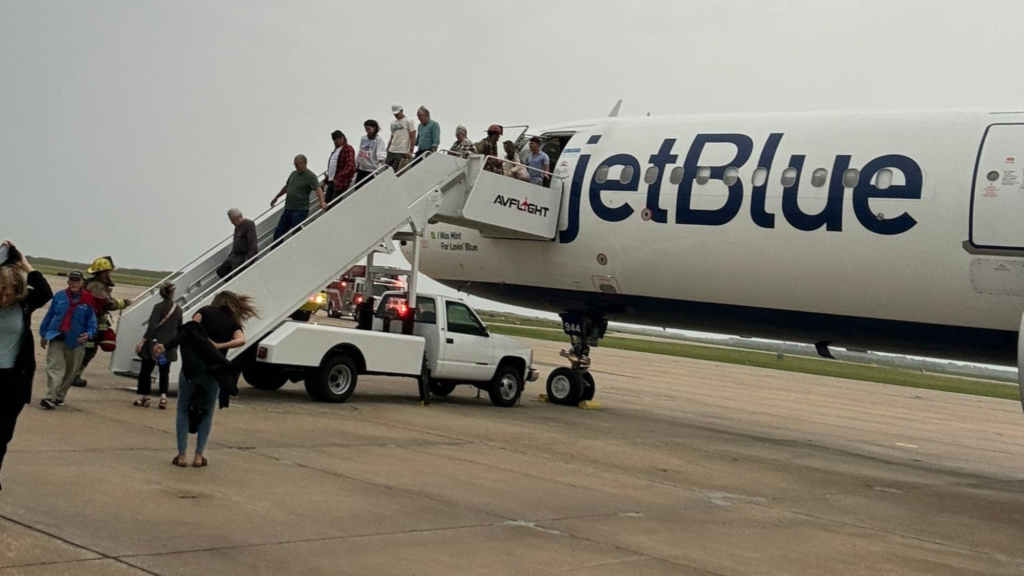
NEW YORK — JetBlue Airways’ shares nosedived by 25% on Tuesday after the airline revealed a disappointing financial outlook for 2025, signaling challenges in navigating cost pressures and growing revenue. The grim projection marked one of the steepest single-day drops for the carrier in recent years.
The New York-based airline forecasts unit costs, excluding fuel, to rise by up to 7% this year compared to 2024. In the first quarter alone, unit costs are expected to jump as high as 10% year-over-year, amplifying concerns about profitability.
While JetBlue predicts a revenue increase of 3% to 6% for 2025, it expects flat capacity. First-quarter revenue projections range from a 0.5% decline to a modest 3.5% growth, trailing the revenue expectations of competitors like Delta Air Lines and United Airlines, which have showcased stronger pricing power.

Cost-Cutting Measures and Restructuring Plans
Amid rising costs, JetBlue has embarked on a cost-cutting strategy to stabilize its financial position. The plan includes eliminating unprofitable routes, deferring new aircraft orders, and boosting revenue through premium-priced seats.
preCharge News reported that the airline recently offered senior pilots early retirement packages, underscoring its efforts to manage expenses and recalibrate operations. However, analysts remain skeptical about whether these moves will deliver the needed financial relief.

Legal Setbacks Cloud Growth Prospects
JetBlue’s struggles are compounded by two high-profile antitrust defeats. In 2024, a federal judge blocked the airline’s $3.8 billion acquisition of Spirit Airlines, a low-cost carrier that subsequently filed for Chapter 11 bankruptcy. A year earlier, JetBlue lost its legal battle over a partnership with American Airlines, which regulators deemed anti-competitive.
The blocked Spirit acquisition was a critical blow, as it would have expanded JetBlue’s reach in domestic and leisure markets. The partnership with American Airlines, known as the Northeast Alliance, had similarly aimed to bolster the airline’s regional footprint.
The company’s inability to execute these growth strategies has left investors questioning its competitive edge in an increasingly consolidating industry.

Industry Headwinds and Competitive Pressure
JetBlue’s disappointing outlook also reflects broader challenges within the airline industry. Rising labor costs, increased competition, and fluctuating fuel prices have pressured airlines to find new ways to maintain profitability.
Larger carriers like Delta and United have outpaced JetBlue in revenue growth, buoyed by strong demand for business and leisure travel. Analysts believe JetBlue’s smaller network and reliance on costlier hubs may hinder its ability to compete effectively.
“JetBlue faces an uphill battle in balancing rising costs with flat capacity and lackluster revenue growth,” said industry analyst Jamie Freed. “Investors are looking for a clearer strategy to navigate these headwinds.”

What Lies Ahead for JetBlue?
Despite setbacks, JetBlue remains focused on streamlining operations and exploring avenues for growth. The airline aims to leverage its reputation for customer experience and expand its premium offerings to attract higher-paying passengers.
However, legal and regulatory hurdles, coupled with competitive pressures, pose significant challenges to the airline’s future. With investors losing confidence, JetBlue must deliver on its cost-cutting and revenue-generating initiatives to regain momentum in a crowded market.

























